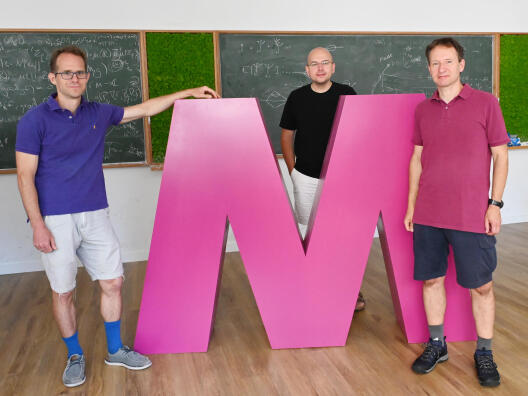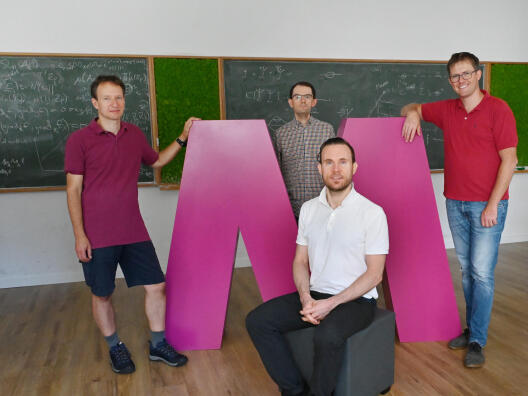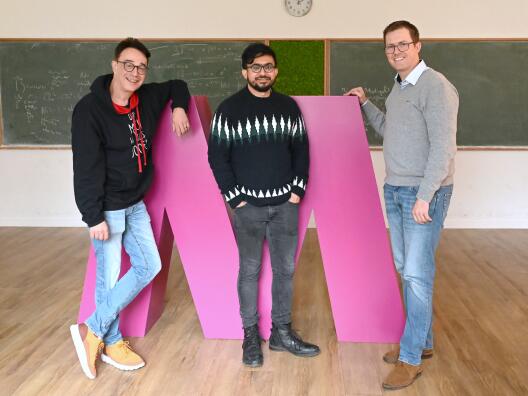since 2023
$\bullet $ Sonja Cox, Arnulf Jentzen, and Felix Lindner.
Weak convergence rates for temporal numerical approximations of the semilinear stochastic wave equation with multiplicative noise.
Numer. Math., 156(6):2131–2177, December 2024.
doi:10.1007/s00211-024-01425-8.
$\bullet $ Paolo Grazieschi, Konstantin Matetski, and Hendrik Weber.
Martingale-driven integrals and singular SPDEs.
Probability Theory and Related Fields, 190(3–4):1063–1120, August 2024.
arXiv:2303.10245, doi:10.1007/s00440-024-01311-2.
$\bullet $ Rodrigo Bazaes, Isabel Lammers, and Chiranjib Mukherjee.
Subcritical Gaussian multiplicative chaos in the Wiener space: construction, moments and volume decay.
Probability Theory and Related Fields, April 2024.
doi:10.1007/s00440-024-01271-7.
$\bullet $ R. Bazaes, C. Mukherjee, M. Sellke, and S.R.S. Varadhan.
Effective mass of the fröhlich polaron and the landau-pekar-spohn conjecture.
arXiv e-prints, February 2024.
arXiv:2307.13058.
$\bullet $ Ajay Chandra, Guilherme de Lima Feltes, and Hendrik Weber.
A priori bounds for 2-d generalised parabolic Anderson model.
arXiv e-prints, February 2024.
arXiv:2402.05544.
$\bullet $ Sebastian Becker, Arnulf Jentzen, Marvin S. Müller, and Philippe von Wurstemberger.
Learning the random variables in Monte Carlo simulations with stochastic gradient descent: Machine learning for parametric PDEs and financial derivative pricing.
Mathematical Finance, 34(1):90–150, January 2024.
doi:10.1111/mafi.12405.
$\bullet $ Guilherme de Lima Feltes and Hendrik Weber.
Brownian particle in the curl of 2-d stochastic heat equations.
Journal of Statistical Physics, 191(2):16, January 2024.
doi:10.1007/s10955-023-03224-1.
$\bullet $ Yifei Zhao.
Half-integral levels.
arXiv e-prints, December 2023.
arXiv:2312.11058.
$\bullet $ Christian Beck, Sebastian Becker, Patrick Cheridito, Arnulf Jentzen, and Ariel Neufeld.
An efficient Monte Carlo scheme for Zakai equations.
Communications in Nonlinear Science and Numerical Simulation, 126:107438, November 2023.
doi:10.1016/j.cnsns.2023.107438.
$\bullet $ Leonardo Tolomeo and Hendrik Weber.
Phase transition for invariant measures of the focusing Schrödinger equation.
arXiv e-prints, June 2023.
arXiv:2306.07697.
$\bullet $ Jörg Schürmann and Raimar Wulkenhaar.
An algebraic approach to a quartic analogue of the Kontsevich model.
Mathematical Proceedings of the Cambridge Philosophical Society, 174(3):471–495, May 2023.
doi:10.1017/S0305004122000366.
$\bullet $ Ajay Chandra, Augustin Moinat, and Hendrik Weber.
A priori bounds for the $\Phi ^4$ equation in the full sub-critical regime.
Archive for Rational Mechanics and Analysis, 247(3):48, May 2023.
doi:10.1007/s00205-023-01876-7.
$\bullet $ Olivier Biquard and Hans-Joachim Hein.
The renormalized volume of a 4-dimensional Ricci-flat ALE space.
Journal of Differential Geometry, 123(3):411–429, March 2023.
doi:10.4310/jdg/1683307004.
$\bullet $ Paolo Grazieschi, Konstantin Matetski, and Hendrik Weber.
The dynamical Ising-Kac model in 3D converges to $\Phi ^4_3$.
arXiv e-prints, March 2023.
arXiv:2303.10242.
Back to top
further publications




